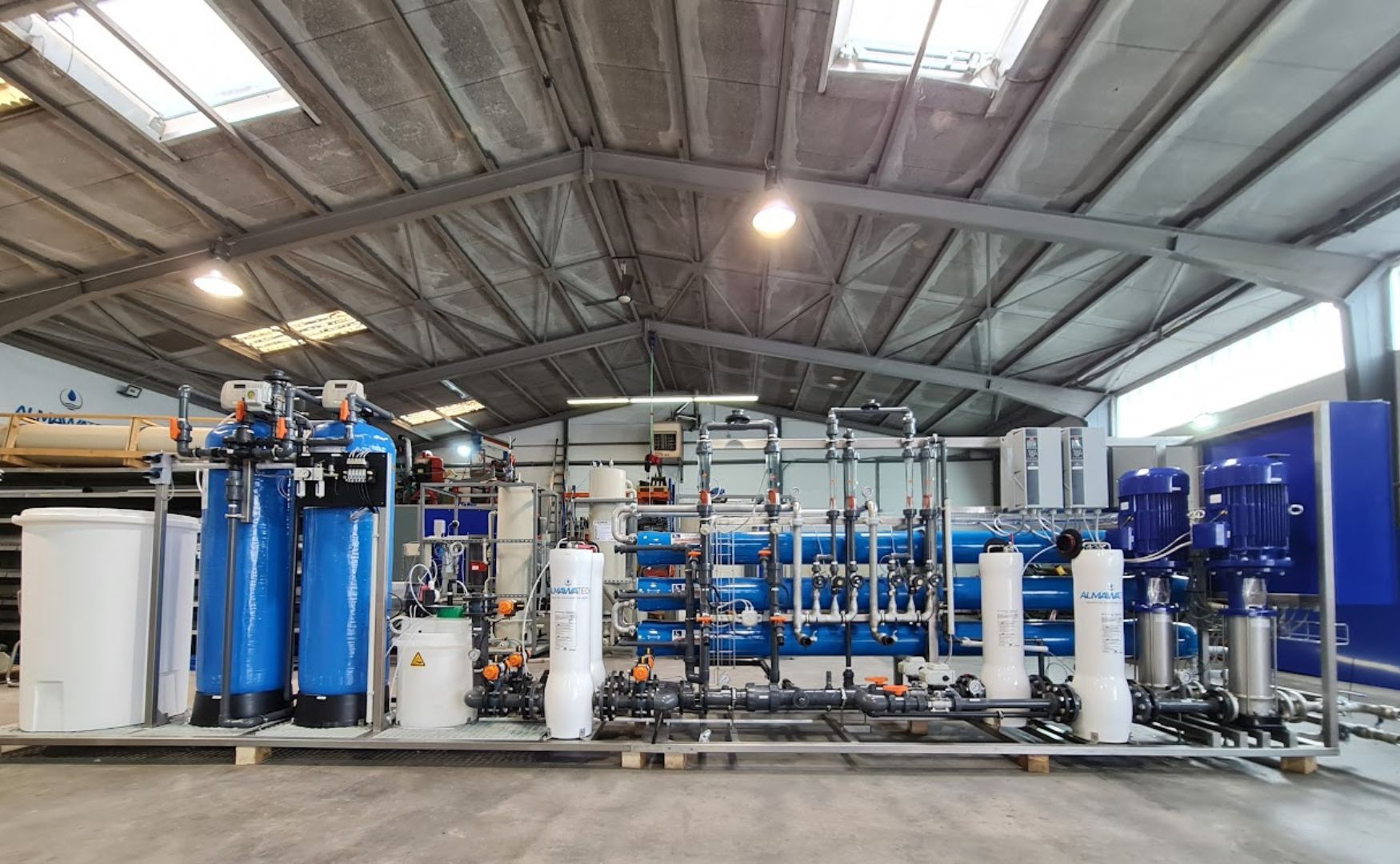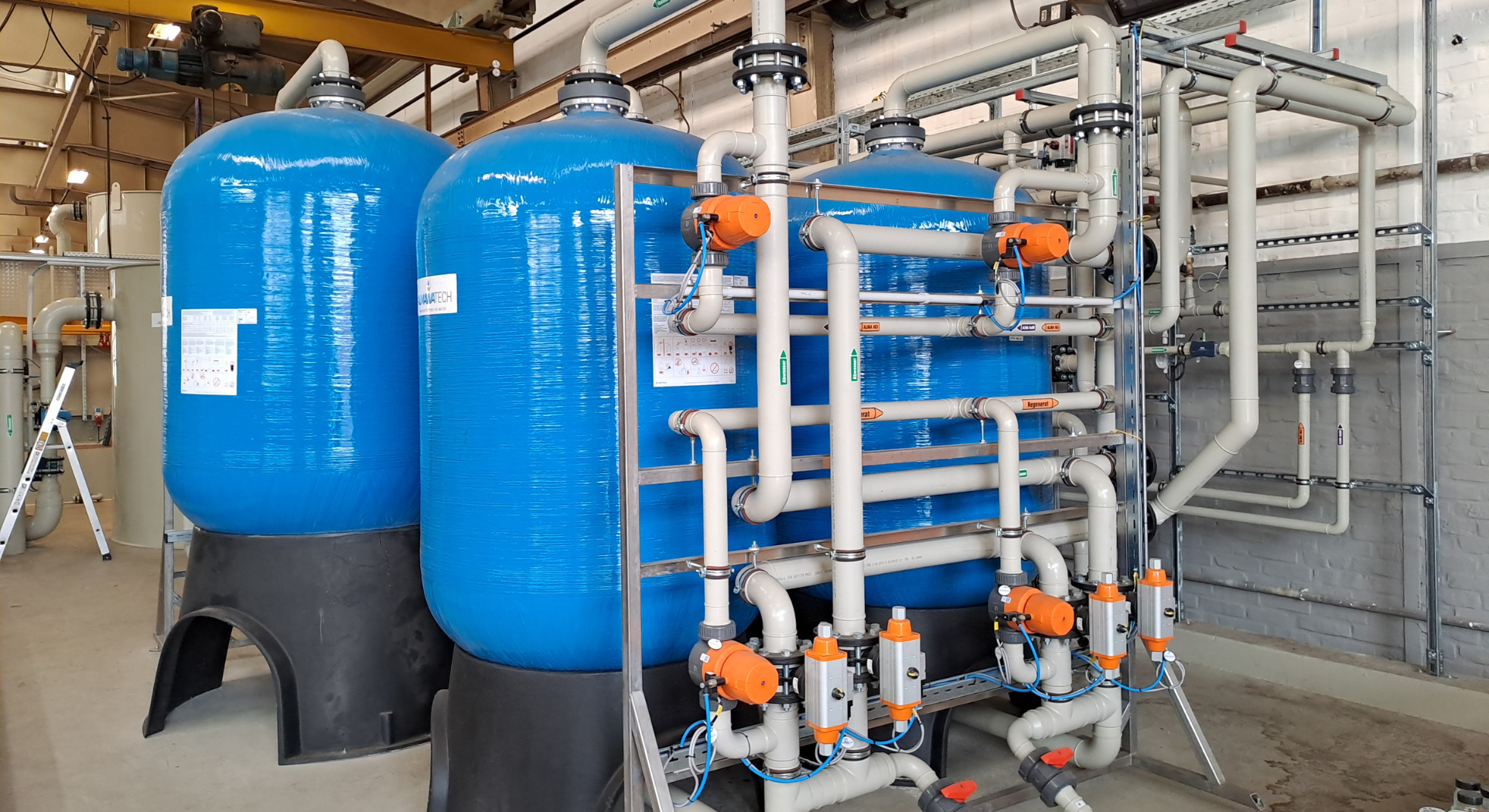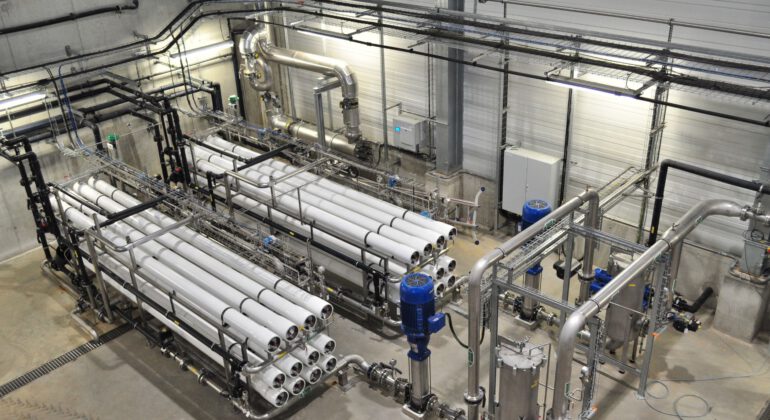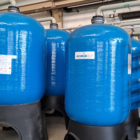Reverse osmosis membranes (RO membranes) are a central component of modern water treatment systems. They work extremely efficiently to remove salts, organic substances and other impurities from the water. However, they are sensitive to oxidizing substances such as free chlorine, which can cause significant damage to the membranes. In this article, we look at the effects of free chlorine on RO membranes, the underlying chemical processes and suitable protective measures.
Table of contents
How does free chlorine affect reverse osmosis membranes?
Most reverse osmosis membranes are made of a multilayer polyamide composite material (TFC - Thin Film Composite), which is responsible for the retention of impurities. Although this material is chemically resistant, it is extremely susceptible to oxidizing substances such as free chlorine. Even small amounts can cause the following damage:
1. destruction of the polyamide layer
Free chlorine attacks the chemical bonds in the polyamide layer of the RO membrane, which is responsible for the selective separation of water and impurities.
- Chemical reaction: The chlorine oxidizes the molecules of the polyamide layer and destroys its structure.
- Consequence: The membrane loses its ability to retain salts and other impurities. This leads to a drastic deterioration in the water quality in the permeate.
2. loss of separation performance
Even low concentrations of free chlorine - often as low as 0.1 mg/l - can impair the function of the membrane:
- Reduced salt retention: The salt content in the permeate increases.
- Increased pressure requirement: Damaged membranes require a higher operating pressure to produce the same amount of permeate.
3. shortened service life
The oxidative damage caused by free chlorine significantly reduces the service life of the membranes. RO membranes normally last 3 to 5 years, depending on the operating conditions. However, contact with free chlorine can destroy their functionality within weeks or months.
4. reinforcing factors
Some conditions can further increase the destructive effect of free chlorine:
- Higher chlorine concentrations: Concentrations above 0.1 mg/l accelerate the oxidation process.
- Higher temperatures: Increase the reaction rate between chlorine and the membrane.
- Longer exposure times: The longer the membrane is exposed to free chlorine, the greater the damage.

Photo: Our ALMA OSMO VE reverse osmosis system for producing deionized water
Protective measures against free chlorine
To ensure the service life and efficiency of reverse osmosis membranes, it is crucial to prevent free chlorine contact. Here are some proven protective measures:
With our ALMA FIL AK activated carbon filters, we ensure that your membranes are optimally protected and the operational reliability of your system is guaranteed.
1. neutralization of free chlorine
- Activated carbon filter: Our Activated carbon filter of the ALMA FIL AK-series offer a particularly effective method for removing free chlorine. Thanks to its high-quality, specially developed activated carbon, free chlorine is reliably adsorbed before it can reach the reverse osmosis membrane. The ALMA FIL AK filter are characterized by the following properties:
- High adsorption capacity: Guaranteed even at high flow rates.
- Simple integration: The filters can be easily integrated into existing systems.
- Long service life: The optimized activated carbon composition reduces maintenance and replacement intervals.
- Zuverlässige Chlorentfernung: Minimierung der Restchlorkonzentration auf < 0,1 mg/l.
- Chemical reducing agents: Substances such as sodium bisulphite effectively neutralize free chlorine before it enters the RO system.

Photo: Our ALMA FIL AK activated carbon filters with upstream ALMA FIL multi-layer filters
2. regular monitoring
Continuous monitoring of the free chlorine concentration in the feed to the RO system is essential:
- Test kits: Inexpensive chlorine test kits (e.g. DPD measurements) enable a quick on-site analysis.
- Online measuring devices: Electronic sensors are recommended for permanent monitoring.
Why is the control of free chlorine so important?
Free chlorine is often used to disinfect water in cooling circuits, for example, especially to remove bacteria and biofilms. While it is indispensable in many processes, it poses a serious risk in reverse osmosis. Compliance with the limit value of max. 0.1 mg/l free chlorine is crucial to ensure the integrity and functionality of the membranes.
Costs due to chlorine damage
Damage to RO diaphragms can cause considerable costs:
- High replacement costs: A damaged membrane must be replaced at an early stage.
- Increased operating costs: Increasing pressure requirements lead to higher energy consumption.
- Production downtime: Damaged diaphragms can lead to downtime and quality problems.
Conclusion
Free chlorine poses a considerable risk to reverse osmosis membranes. Even low concentrations can permanently damage the membranes and impair the efficiency of the entire system. With suitable protective measures - such as the use of activated carbon filters from the ALMA FIL AK series, regular monitoring and membrane-compatible disinfectants - damage can be avoided and the service life of the membranes significantly extended.
For further information on our products, please feel free to contact us at any time!











